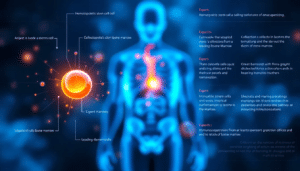Stem cell therapies, including those involving human stem cells, have captivated the medical world, offering potential solutions for everything from chronic diseases to injury recovery. One of the latest advancements in this field is the use of expanded stem cells. The concept promises more stem cells and, theoretically, more healing power. But bigger isn’t always better.
The expansion process—multiplying cells in a lab—may sound like a breakthrough, but it comes with significant risks. In this comprehensive guide, we will explore why expanded stem cell therapy might not be the miracle it seems. We’ll dive into the potential dangers of expanded stem cells, including gene expression mutations, contamination, and the reduced potency of pluripotent stem cells. For patients considering this therapy, understanding these risks is crucial.
This article will not only help you dive deeper into the science behind expanded stem cells, but also offer insights into the safer alternatives and the ethical and regulatory landscape of stem cell research.
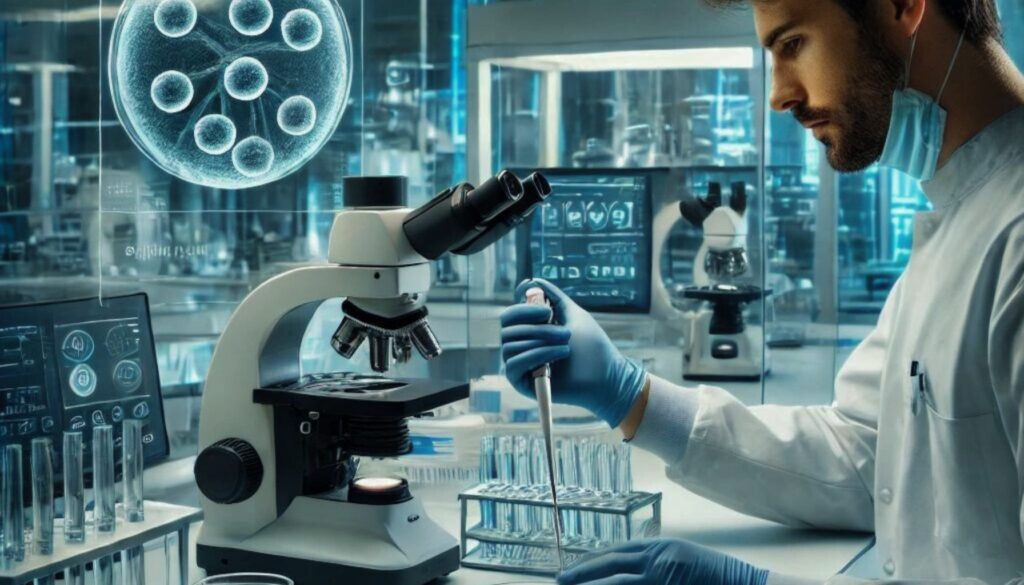
Understanding Stem Cells
Stem cells are the cornerstone of regenerative medicine, offering the potential to repair or replace damaged tissues and organs. But what exactly are stem cells, and why are they so important?
Definition and Function of Stem Cells
Stem cells are unique cells with the remarkable ability to self-renew and differentiate into various specialized cell types. This dual capability makes them indispensable for the body’s development, growth, and repair processes. Self-renewal allows stem cells to maintain their population by continuously dividing to produce more stem cells. Differentiation, on the other hand, enables them to transform into specific cell types, such as blood cells, nerve cells, or muscle cells, depending on the body’s needs.
These properties make stem cells a focal point in stem cell biology and regenerative medicine, as they hold the promise of treating a wide range of conditions, from degenerative diseases to traumatic injuries.
Types of Stem Cells
Stem cells come in several varieties, each with its own unique characteristics and potential applications. The three main types are embryonic stem cells, adult stem cells, and induced pluripotent stem cells.
Embryonic Stem Cells: Derived from early-stage embryos, these cells are pluripotent, meaning they can differentiate into any cell type in the body. This versatility makes them highly valuable for research and potential therapies, but their use is often accompanied by ethical and moral debates.
Adult Stem Cells: Found in various tissues throughout the body, such as bone marrow and fat, adult stem cells have a more limited differentiation potential compared to embryonic stem cells. They are typically multipotent, meaning they can develop into a few related cell types. Despite their limitations, adult stem cells are widely used in treatments like bone marrow transplants.
Induced Pluripotent Stem Cells (iPSCs): These are adult cells that have been genetically reprogrammed to an embryonic stem cell-like state. iPSCs offer the benefits of pluripotency without the ethical concerns associated with embryonic stem cells. However, the reprogramming process can introduce genetic instability, posing its own set of challenges.
What Are Expanded Stem Cells?
Expanded stem cells are stem cells that have been artificially grown or multiplied in a laboratory. These expanded stem cells are often derived from a stem cell line, which is a group of cells cultivated from a single original stem cell in a laboratory environment. Typically, these cells are harvested from sources such as bone marrow, umbilical cord blood, or adult stem cells in the patient’s body. By introducing specific growth factors into a culture medium, these cells undergo several rounds of division, increasing the total cell mass. The idea is that by expanding the number of stem cells, the body will have more resources to repair tissues, heal injuries, or even fight disease.
However, the process of stem cell expansion involves manipulating cell cultures in a lab, and this can introduce a host of potential issues. The promise of more cells comes with the risk of contamination, somatic mutations, and malignant transformation, which can reduce the effectiveness of the therapy and potentially lead to serious side effects, including cancer.

What is Stem Cell Expansion?
Stem cell expansion refers to the process of increasing the number of stem cells outside the body, either in vitro (in a lab) or in vivo (within a living organism). This is typically achieved by exposing the cells to specific growth factors, cytokines, and other signaling molecules that stimulate cell division.
In the context of regenerative medicine, stem cell expansion is crucial because it allows for the generation of a large number of cells needed for therapeutic applications. For instance, expanding hematopoietic stem cells can provide sufficient quantities for bone marrow transplants, while expanding pluripotent stem cells can aid in tissue engineering and the development of new treatments.
However, as we’ve discussed, the process of expanding stem cells is fraught with risks, including genetic mutations, contamination, and reduced efficacy, making it a double-edged sword in the realm of cell therapy.
Pluripotent vs. Expanded Stem Cells
Pluripotent stem cells, including induced pluripotent stem cells (iPSCs) and embryonic stem cells, are capable of developing into various cell types. These versatile cells have the potential to become blood cells, nerve cells, heart muscle cells, and more. The inherent versatility of pluripotent stem cells has made them a focal point in regenerative medicine and stem cell research.
When these cells are expanded in a lab, however, their behavior can change. The longer the cells are cultured, the more likely they are to undergo changes in cell morphology and genetic stability. This often leads to the development of abnormal characteristics, which could compromise their therapeutic potential. Moreover, the artificial expansion of human pluripotent stem cells may increase the risk of malignant transformation, making these cells less safe for clinical applications.
Human embryonic stem cells and embryonic stem cell lines are often used in these processes, but the expansion of such cells is associated with the same risks. Cell lineages expanded in vitro can deviate from their intended pathways, leading to unpredictable outcomes in therapy.
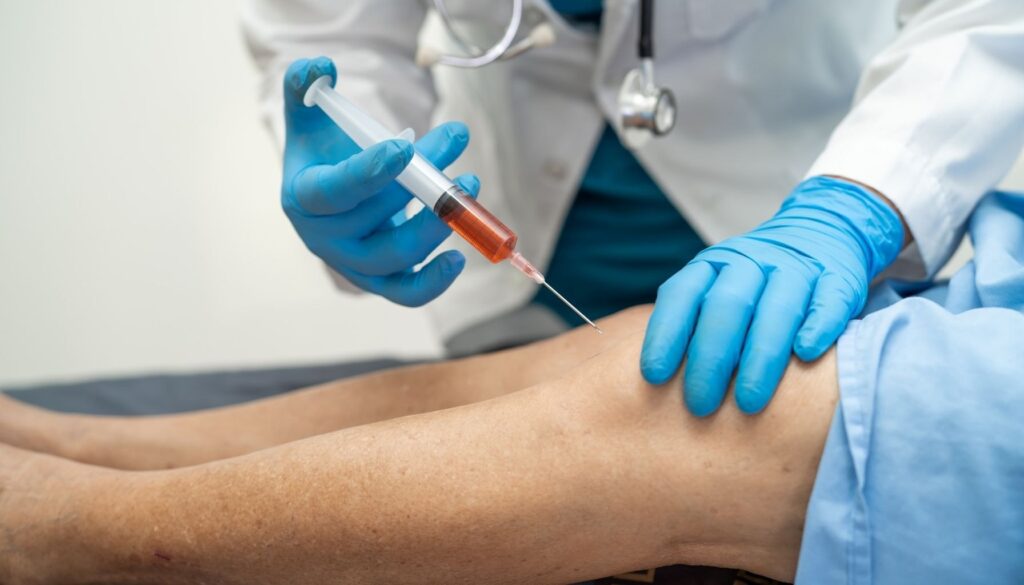
The Risk of Genetic Mutations in Expanded Stem Cells
One of the biggest concerns with expanded stem cells is the risk of genetic mutations. In their natural state, stem cellspossess a robust capacity for self-renewal and differentiation. However, when they are manipulated in the lab through stem cell expansion, there is a risk that their genetic material may become altered. Somatic mutations can occur, which are changes in the DNA that happen after birth, often as a result of environmental factors, such as radiation or chemical exposure. When these cells are multiplied, any genetic material issues present can be exacerbated.
Studies have shown that prolonged cell cultures increase the chance of mutations. These mutations may affect gene expression, potentially leading to harmful effects like cancer. For example, hematopoietic stem cells (HSCs), which give rise to all other blood cells, are particularly susceptible to somatic mutations during expansion. Once these mutated cells are injected into the body, the patient risks developing complications, including cancer cells or degenerative diseases.
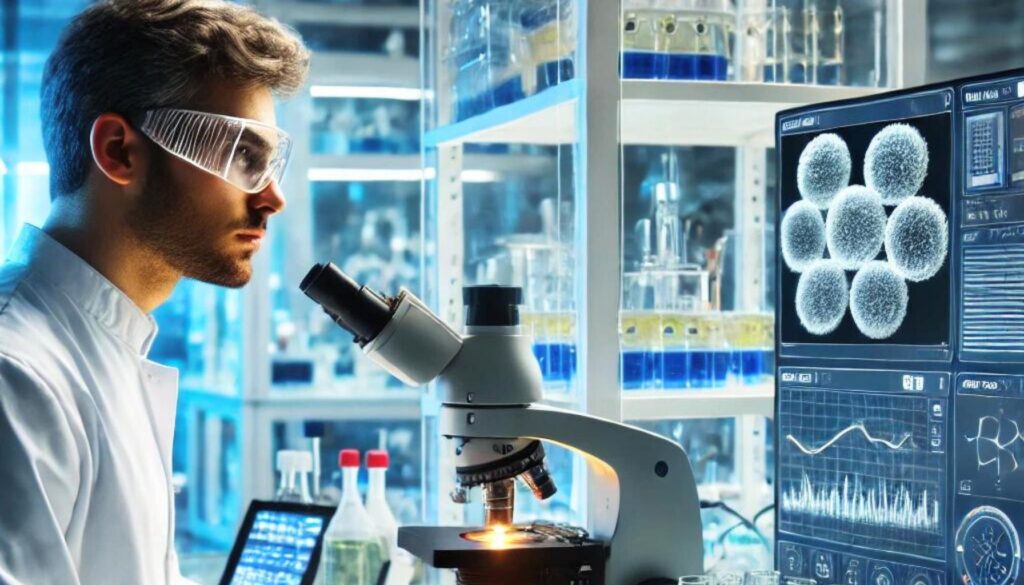
Tumors and Cancer
One of the most alarming risks associated with expanded stem cells is their potential to form tumors or cancerous growths. When stem cells are manipulated and expanded in a lab, they can undergo genetic changes that may lead to malignant transformation. This is particularly concerning with pluripotent stem cells, which have a high propensity for uncontrolled growth if not carefully monitored.
Studies have shown that the longer stem cells are cultured, the greater the risk of accumulating genetic mutations that can lead to cancer. For example, expanded hematopoietic stem cells, which are used to generate blood cells, can develop mutations that predispose them to form leukemias or other blood cancers. This risk underscores the importance of rigorous screening and quality control in stem cell therapies to ensure that the cells used are safe and free from malignant potential.
Immune Rejection and Uncontrolled Growth
Another significant concern with expanded stem cells is the risk of immune rejection and uncontrolled growth. When stem cells are expanded outside the body and then reintroduced, the immune system may recognize them as foreign and mount an attack. This immune response can lead to the rejection of the transplanted cells, rendering the therapy ineffective.
Moreover, the process of expanding stem cells can sometimes lead to uncontrolled growth, where the cells continue to proliferate unchecked. This can result in the formation of unwanted tissue masses or tumors, posing serious health risks to the patient. Ensuring that expanded stem cells maintain their normal growth patterns and do not become hyperproliferative is a critical challenge in the field of stem cell biology.
In conclusion, while expanded stem cells hold great promise for regenerative medicine, the potential dangers, including genetic mutations, contamination, immune rejection, and uncontrolled growth, cannot be overlooked. Patients and healthcare providers must carefully weigh these risks against the potential benefits when considering stem cell therapies.
Contamination and Safety Concerns in Stem Cell Expansion
The process of expanding stem cells involves growing them in a lab environment, often for several weeks. During this time, the cell cultures are exposed to various conditions that increase the risk of contamination. Even in highly controlled environments, contamination by bacteria, viruses, or other pathogens is a constant risk.
When expanded stem cells become contaminated, the consequences can be dire. Injecting contaminated cells into a patient may result in severe infections or immune reactions. Additionally, contaminants can disrupt the normal function of the cells, leading to ineffective or harmful outcomes.
Given these risks, it’s critical that clinics and laboratories adhere to the strictest standards for cleanliness and safety. Unfortunately, many countries lack stringent regulations governing stem cell expansion, leaving patients vulnerable to poorly controlled procedures. This lack of oversight increases the likelihood of receiving contaminated or substandard expanded stem cells.
Ethical Considerations: The Use of Embryonic Stem Cells in Expansion
The ethical concerns surrounding human embryonic stem cells (ESCs) are long-standing. While embryonic stem cellsare prized for their ability to become any type of cell in the body, their use raises moral and ethical questions. Embryonic stem cell lines are often derived from embryos, leading to debates about the sanctity of human life.
In the context of stem cell expansion, ethical concerns are further compounded by the risks of genetic manipulation and contamination. Some believe that the potential benefits of regenerative medicine do not outweigh the moral costs, especially given the availability of other types of stem cells, such as adult stem cells and cord blood-derived cells.
Induced pluripotent stem cells (iPSCs), which are derived from adult cells rather than embryos, offer a potential solution to these ethical issues. However, the expansion of iPSCs is not without its own challenges, including the same risks of genetic instability and contamination.
Efficacy and Longevity of Expanded Stem Cells
One of the most significant drawbacks of expanded stem cells is their diminished efficacy over time. The process of expansion causes stem cells to undergo multiple rounds of division, which can lead to cell death or differentiated cellloss. As cells divide in the lab, they lose their original potency and ability to regenerate damaged tissue effectively. This is particularly true for hematopoietic stem cells and other cells used in stem cell transplantation.
It’s highly possible for expanded stem cells to lose their ability to differentiate into specific cell types. For example, new stem cells derived from mouse embryos often lose their differentiation potential after undergoing several rounds of expansion. This reduces their ability to form the specialized cells needed for tissue engineering and regenerative therapies.
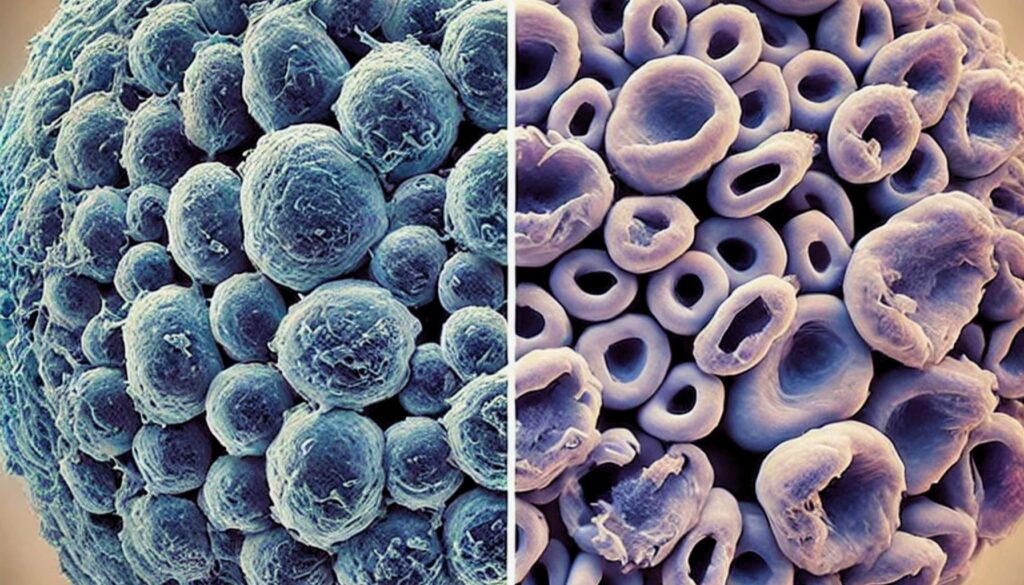
Regulatory and Legal Challenges
Despite the promise of stem cell therapies, regulatory frameworks around the world are inconsistent. In some countries, stem cell therapy involving expanded cells is strictly regulated, while in others, it exists in a legal gray area. This can make it difficult for patients to determine the safety and efficacy of treatments offered in various clinics.
In the United States, the Food and Drug Administration (FDA) requires stem cell products to go through rigorous testing before they can be approved for use. However, many clinics circumvent these regulations by offering expanded stem cells as part of “experimental” or “investigational” therapies, leaving patients vulnerable to unproven treatments.

Making The Right Decision: Weighing the Risks and Alternatives
Before undergoing any form of stem cell therapy, it’s important to weigh the risks and benefits carefully. While the idea of more cells might seem promising, the reality is that expanded stem cells carry significant risks, including genetic mutations, contamination, and reduced efficacy.
For many patients, safer alternatives exist. Stem cell transplantation using cord blood or bone marrow cells, for example, offers a lower risk profile than expanded stem cells. Additionally, adult stem cells harvested from the patient’s own body provide a viable option without the ethical and safety concerns associated with embryonic stem cells.
Conclusion
Expanded stem cells may seem like a game-changing innovation, but the risks they carry—ranging from contamination to malignant transformation—cannot be ignored. Whether you are considering pluripotent stem cells, hematopoietic stem cells, or other types of stem cells for therapy, it is essential to consult with a qualified healthcare provider who specializes in stem cell therapies. Understanding the complexities of stem cell expansion and the potential dangers associated with it is crucial for making informed decisions about your treatment options.
While expanded stem cells offer the allure of more cells and faster healing, the risks involved—such as somatic mutations, loss of differentiation potential, contamination, and ethical concerns—far outweigh the perceived benefits. Additionally, the limited regulation of stem cell research and cell therapy practices leaves patients vulnerable to receiving unsafe or unproven treatments.
For those seeking regenerative medicine treatments, there are safer alternatives to consider. Adult stem cells, cord blood, and minimally manipulated bone marrow-derived stem cells are all viable options with lower risks. These types of therapies rely on stem cells that are naturally occurring within the body and are harvested and re-injected with minimal manipulation. Because these cells haven’t been exposed to the same risks of contamination, genetic instability, or loss of efficacy through expansion, they tend to offer more predictable and safer outcomes.
Additionally, advances in stem cell research continue to push the boundaries of what can be achieved without relying on risky expansion processes. Induced pluripotent stem cells (iPSCs) and other emerging techniques are being studied for their potential to offer regenerative solutions without the same ethical and safety concerns associated with embryonic stem cells and expanded stem cells.

